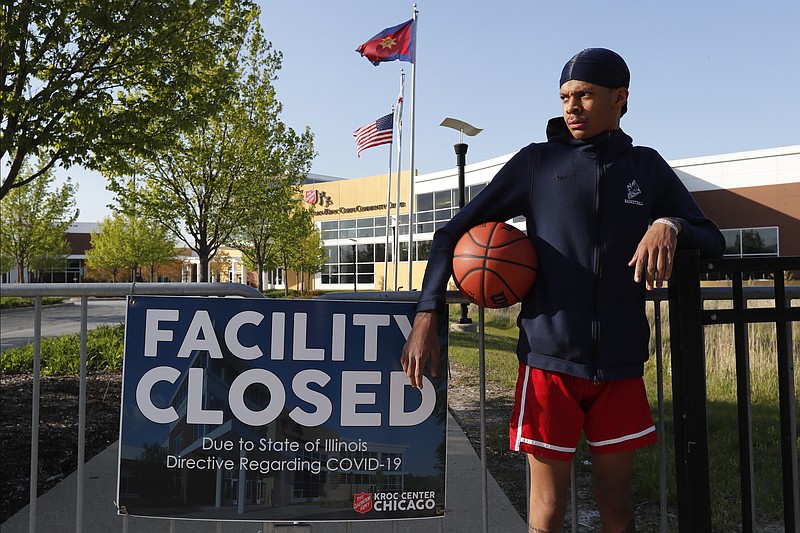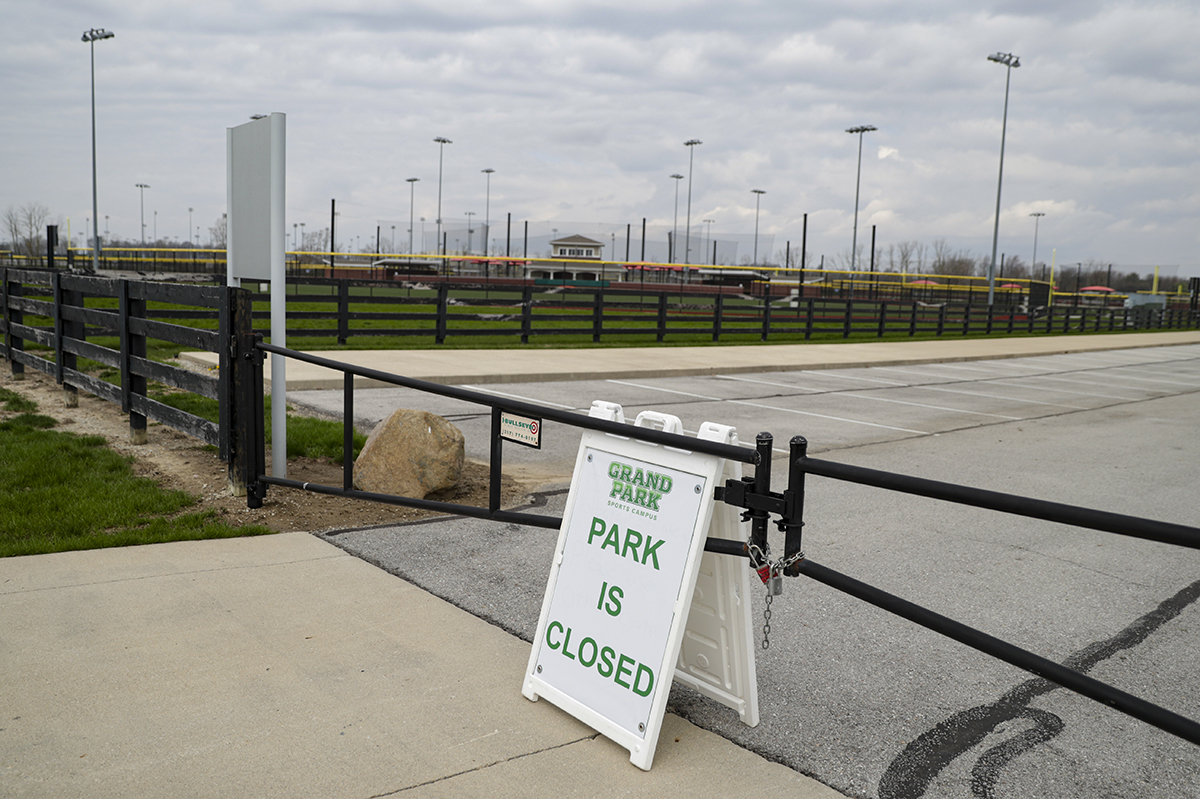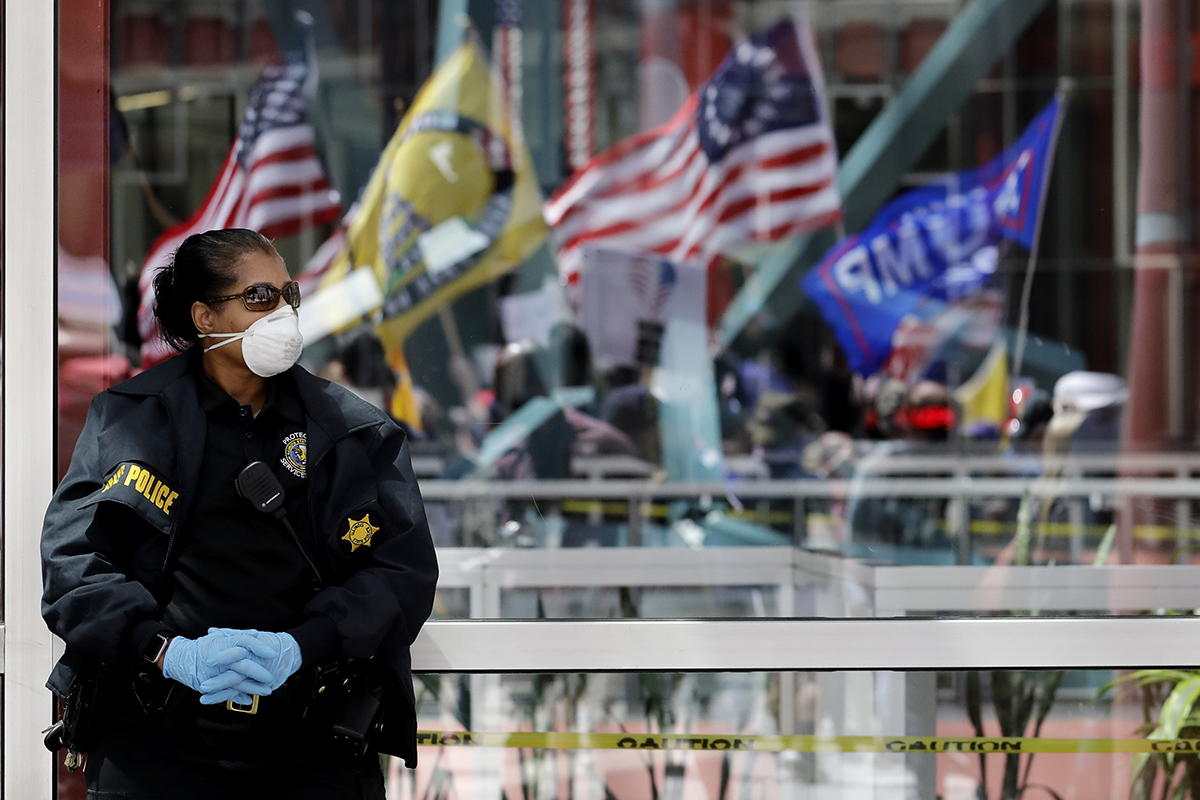CHICAGO - Growing up in a rough part of Chicago's South Side, Saint Wilkins figured he was headed for a life on the streets.
The 19-year-old has another plan these days: attend college, study psychology and work with youth. Before he started playing basketball at his local community center, it was a different picture.
"If it wasn't for the Kroc Center, I'd be gang-banging," Wilkins said. "I promise you that."
The Salvation Army Ray and Joan Kroc Corps Community Center is currently closed because of the coronavirus pandemic, like many youth sports facilities across the United States. In place of bouncing balls and squeaking sneakers, there is silence and uncertainty.
The future of publicly funded youth sports is a growing concern in the sea of problems created by the coronavirus crisis. Community leaders see a struggling economy leading to lower municipal tax revenue and private donations that help fund their organizations. Rising unemployment means fewer families will be able to afford their programs, and fewer slots because of social distancing measures is another financial blow.
There is worry about a group of children being lost to sports forever, both in terms of physical fitness and the personal growth that occurs on neighborhood fields and courts.
"This is an existential threat to the youth sports landscape as we know it," said Wayne Moss, the executive director of the National Council of Youth Sports.
Recreation centers and parks departments that only recently recovered from the 2008 recession are bracing for another big blow, particularly for poor communities.
"There's no question that the most significant impacts will be felt in low-income communities," said Dev Pathik, a leading consultant in the youth sports business and CEO of The Sports Facilities Advisory.
Fueled by travel teams and fancy new facilities, youth sports has become a $22 billion global industry with three-fourths of that in the United States, according to WinterGreen Research. It's not unusual for families to spend thousands on trips, fees, coaching and equipment.
When it comes to participation, though, the gap between the haves and have-nots is jarring.
Youngsters ages 6-18 from low-income families quit sports for financial reasons at six times the rate of their counterparts from wealthy families, a 2019 survey by the Aspen Institute's Project Play initiative and Utah State's Families in Sport Lab found. The survey of 1,032 adults with children who played sports also showed wealthier families spend more annually per child on average - $1,099 for high-income homes, $719 for middle income and $476 for low income.
Asked about the effect of the coronavirus shutdown on low-income areas, Moss looked back on the aftermath of the 2008 recession.
"As we have these issues, those providers in communities that need it most will also be those providers that likely will go under," he said. "So without their support, without their systems in those communities, those young people who really need it most likely will again be disproportionately impacted by not having sports."
Who suffers most?
The pandemic also presents its own set of challenges beyond any recession, with the need for masks, hand sanitizer and social distancing. Summer camps, for example, are facing reduced enrollment - assuming they are operating - so campers and counselors have enough space.
"That affects the at-risk and vulnerable populations because that population especially needs the childcare component to allow working families to go back to work," said Felicia Donnelly, a past president of the Florida Recreation and Parks Association and current assistant city manager of Oldsmar, near Tampa.
Villanova sociology professor Rick Eckstein sees a sort of "social Darwinism" at play in which low-income youth continue to get squeezed out.
Many organizations are offering online programs, but internet access is less reliable in some poor communities, and schools, playgrounds and facilities are closed in many neighborhoods all over the economic spectrum.
"They used to be able to go to the local playground or wherever the basketball court is that's closest to your house," said Amy Giddings, a sports and recreation management professor at Temple and a two-time U.S. champion rower. "You could go there, and you'd always find a pickup game. If soccer's your thing, you could go find a playground and do that. It's a little bit more challenging now with social distancing and also with parents just being really concerned."
At the Kroc Center, a sign in front says the building is closed and another out back reminds visitors the outdoor basketball courts are off limits, too. That doesn't stop kids from sneaking onto them just about every day.
"It's really just heartbreaking," said Salvation Army Maj. Johanna Pook, an officer at the center and a mother of three with two teenage boys who constantly ask when they can use the courts again.
Kroc Center athletics manager Janelle Mason figures 80% to 85% of the young people who use the facility are from challenging backgrounds in a neighborhood dotted with boarded-up buildings and empty lots.
"We are really kind of a haven for them to be distracted from the things that are going on surrounding our community center," she said. "You have children who have parental situations that are not ideal. This gives them a way to escape from that. This also gives them a network to help them resolve some of the issues that they have."
Without the center?
"I'd probably be in the streets," said Wilkins, who recalls seeing a bullet hole in the house next door seven or eight years ago and being grateful he and his family weren't home.
At school, he was constantly in trouble and spent too much time in the principal's office. After his mom bought him a membership at the Kroc Center, the facility became like a second home, whether he was shooting hoops, playing games with other kids in the teen room or getting help with his homework in the computer lab.
Now, he's finishing up at Harlan Community Academy High School, eyeing a bright future. And he feels for the younger kids who don't have access to the center.
"It's sad," he said. "I know they're bored, because I'm bored. I have no gym to go to."
The wait is also tough for the people on the other side.
"We know and we see and we hear things on TV and on radio and on social media all the time about the impact this is having on our world," said Salvation Army Maj. John Pook, senior officer at the center and Johanna's husband. "We're talking big picture. But very often, we forget about the children at home that are struggling with everything else that is going on. They're a part of this."
Search for solutions
It started when a handful of organizations got together to discuss the effect of the shutdown on youth sports.
The small conversation quickly turned into 600-some groups. Then it cruised past 1,000 on its way to 3,000 organizations and individuals signing on for the PLAY Sports Coalition - a united effort by the youth sports world to push for federal help with the coronavirus crisis.
"The momentum keeps growing," said Terri Lakowski, the CEO of Active Policy Solutions, a lobbying firm that lists sports, health and youth development among its specialties. "There's just this huge community out there of youth sports providers who are hurting and want to work together for a solution."
The leaders of the coalition are trumpeting the importance of youth sports and sounding the alarm about the future of their organizations in correspondence with legislators in Washington. The fate of providers in low-income communities is of particular concern.
According to an April online poll by Aspen Institute's Project Play initiative, 38% of local sports leaders expect to lose up to 50% of their revenue over the next year. An additional 16% said they expect to lose up to 75%.
"This is an important issue," said Wayne Moss, the executive director of the National Council of Youth Sports. "It's a timely issue, and young people right now are up against it in terms of the possibility of not being able to participate."
One of the objectives for the coalition is the creation of a loan program for youth sports organizations. Congress passed a $2.2 trillion virus relief package in March that included a Payroll Protection Program for small businesses, but it wasn't designed for youth sports organizations that rely more on volunteers and independent contractors.
"Having the calculation for relief being based on an employee basis just doesn't really get the kind of relief that these organizations need," said Lakowski said, who explained such aid would be better based on gross receipts or operating loss.
The relief fund was included in legislation proposed by U.S. Rep. Max Rose, a New York Democrat, last week. It also proposes an expansion of the child and dependent care tax credit to include expenses for youth sports and other recreational activities, and it would ensure health savings and flexible spending accounts could be used for expenses related to youth physical activities.
The coalition is looking for more support.
"I mean especially right now with everything kids are dealing with and the scariness of the world, having the outlet of sports and the mentors and leaders that coaching provides is even more critical now than ever," Lakowski said. "And so we need to ensure that the infrastructure of youth sports and youth sports organizations can survive so that kids have the outlet that sports provide."


